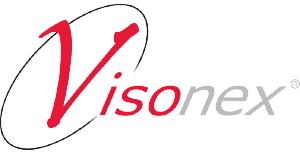Trends in Healthcare Informatics
We have all heard the term “knowledge is power”. Today’s ever-expanding value-based models are forcing a shift away from the traditional doctor-centered model of care. The new model of care is a more patient-centered approach. The goal of this approach is to deliver accessible, high-quality care to the patient. This is all while driving efficiencies and reducing costs. A key component of patient-centered care involves the ability to have comprehensive information to treat the patient when you need it, where you need it, to best impact outcomes. Read on and take a look at the current trends in healthcare informatics.
Trends in Healthcare Informatics
There is greater access to patient health data and medical research than ever before. In turn, this has created the need to have a way to manage data and make it easier for providers to use in a meaningful way when caring for patients.
AI in Healthcare
To improve outcomes, interoperability is necessary to gather data from multiple sources. However, you must be able to transform this data into meaningful information the clinician can use. In turn, the clinician is then able to stratify risk and guide the best care for their patients. Artificial intelligence (AI) and decision support tools can assist clinicians with the ability to provide proper interventions at the right time. Tracking progress, measuring results against objectives, and making necessary adjustments, are also an integral part of optimal health care delivery.
Advances in AI within health care are very exciting. This is especially true for healthcare informatics graduates just starting out. The total public and private sector investment in healthcare AI are staggering. In 2021, the total investment in this sector is projected to reach $6.6 billion. Experts are hopeful for what the investments in AI will mean for the industry and the future of patient care.
Healthcare Record Accessibility
To complement this enhanced information management ability, we can expect to see increased patient involvement. This includes improved accessibility to shared records across multiple platforms, the integration of smart devices, greater health information exchange and interoperability, and innovative real-time secondary uses of data. Together, the continued progression will lead to a healthier population. This will in turn reduce costs by providing the ability to design and apply health care interventions for patients in a timely manner.
With this trend in healthcare informatics, patients and doctors have seen overwhelmingly positive benefits. The ability for patients to access their healthcare data has opened the door to better communication between healthcare providers and patients. Better health outcomes and more informed decisions are made when patients are able to access their healthcare data. This includes statistics about others’ experiences as well. The more health data that is collected and made available to doctors, patients, and healthcare professionals the better. Every member of the healthcare system stands to benefit from greater access to health data.
Visonex®
Visonex is committed to the advancement of the integrated model of care in this value-based healthcare environment and can help your organization successfully manage chronic health conditions such as Chronic Kidney Disease (CKD). Visonex’s proprietary Analytics Data Warehouse (ADW), interoperability with multiple data sources, and chronic care electronic health care records EHR platform with AI/decision support tools provide a meaningful, data-driven approach to improved patient health while assisting in driving efficiencies and reducing costs. Email us to learn more about how this could impact your organization [email protected] or Request Information. Maximize patient outcomes, improve regulatory compliance, streamline workflows, and incorporate multiple sources into a single landing point for chronic disease management. Now that is providing “Clarity” to a cloudy situation!
